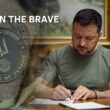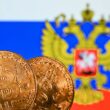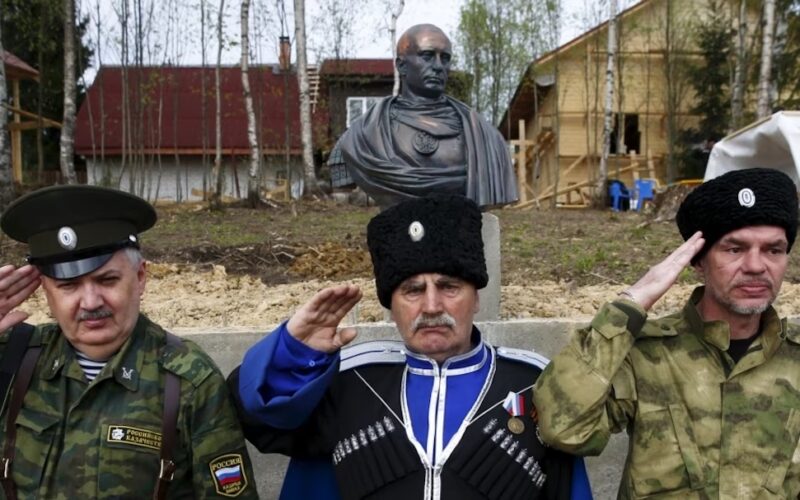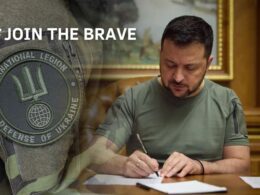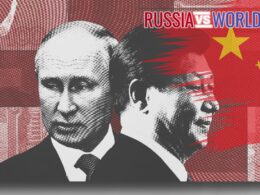Ukrainian Cossacks and Russian Cossacks are two completely different phenomena. Unfortunately, Russia, as always, is trying to rewrite history. While the Ukrainian Cossacks are mostly a historical phenomenon, the Russian Cossacks have become a weapon in the hands of various dictators, from Hitler to Putin.
Image: Cossacks during the unveiling ceremony of the bust of Russian President Vladimir Putin in the Leningrad region. May 16, 2015 / Reuters
Who are the Cossacks?
In the last years of the Soviet Union’s existence, the Cossacks began to revive in Ukraine, Russia, Belarus, and Kazakhstan. But what does the modern image of the contemporary “Cossack” have in common with its historical ancestor?
The first mention of the Cossacks appeared in a Mongolian chronicle of the 13th century.
“Cossack” meant free, independent people who did not have a clearly defined place in society and inhabited deserted outskirts. The Slavic Cossacks first appeared in the 1480s, but only with the spread of serfdom in the mid-16th century did their numbers increase significantly. Initially, the bulk of the Cossacks were fugitive peasants, but there were also burghers, defrocked priests, and adventurers from the impoverished nobility,” Canadian historian of Ukrainian descent Orest Subtelny defined the Cossacks.
Describing the Cossacks in his work, the historian argues that the Russian variety of the Cossacks gravitated east of the Don River and emerged closer to the 16th century. The Cossacks defended the borders and conquered new territories for the Moscow Tsardom, and later for the Russian Empire.
“A new ethnic group was formed on the Don, which later became a sub-ethnic group – the Cossacks. They accepted fugitive peasants into their ranks and felt completely independent. Invariably recognizing the Grand Duke of Moscow as their sovereign, they disliked the boyars and representatives of the bureaucracy of the time, the Dyaks,” wrote Russian historian Lev Gumilev.
However, at the end of the eighteenth century, during the reign of Catherine II, the Cossacks in the Russian Empire lost much of their autonomous rights. A hundred years ago, in early 1917, there were 11 Cossack formations in the Russian Empire, scattered across territories from the Black Sea to the Pacific Ocean. The Cossacks reacted negatively to the Bolshevik coup and therefore suffered repression.
Stolen History
Ukrainian Cossack researcher Viktor Brekhunenko argues that it is necessary to escape the captivity of Russian historiography, which has constantly imposed the idea that the Cossacks differ only in the rivers on which they live: the Dnipro, Don, Volga… And this was the line they drew, saying that it was all one “Cossackia” – the whole steppe belt – and thus took away Ukraine’s Cossack history.
In fact, the situation is quite the opposite: historical sources irrefutably show that the history of those Cossacks who can be conditionally called Russian-not by their origin, but by the fact that their territories belonged to the modern Russian state-was quite different.
In the steppe belt that stretched from the Caspian Sea to the Danube, in its eastern part, from the Don to the Caspian Sea, Cossack communities began to form in the early sixteenth century. And the Ukrainian Cossacks who already existed at that time took an active part in the genesis of those Cossack communities. That land was on the edge of the steppe border, and their enemies were already there. There was a huge ethnic mix there. But the spontaneous movement of Ukrainian Cossacks who emigrated to the Don was not enough to form another center of the Ukrainian Cossacks there. The elite of the time-princes and nobility-did not support this spontaneous movement. That is why the first Cossacks on the Don and Volga were organized as separate ethnic and social organisms. They were aware of their separateness and distinguished themselves from all their neighbors, including the Muscovites.
The historian argues that until 1671, the year Stepan Razin’s uprising was defeated in the Moscow kingdom, the Cossacks of the Don, Volga, Yayta, Terek, and Hrebinsk cultivated their separateness from Moscow. And in Moscow, they were perceived not as Muscovites but as representatives of another ethnic and social community. The Don Cossack Army, as the most powerful of those Cossacks, was extremely careful not to change even the symbolism of relations between Moscow and the Don, so as not to show its subordination. In 1722, the Don Army finally lost all signs of a self-sufficient organism.
“We must understand two things: those areas-from the Don to the Caspian Sea-have never been ethnic Russian territories. And even Moscow itself did not think so. And all of Moscow’s ideological concepts up to the present day have never included those territories in the oikumene of the power of the Moscow tsars. And the Cossack communities that appeared there did not consider themselves Russians even in the early twentieth century. I would like to emphasize that Moscow groundlessly claims that the modern southern and eastern parts of Ukraine are not ethnic Ukrainian lands. Instead, Moscow itself has vast territories right next to it that has never really been Russian,” Viktor Brekhunenko points out.
In the 19th century, the Russian Cossacks became one of the pillars of power that were supposed to defend the faith, the tsar, and the fatherland.
Cossacks not only formed part of the Russian army but also participated in Jewish pogroms. For example, eyewitnesses to the Jewish pogrom on September 27, 1914, in Lviv, which was occupied by Russian troops during World War I, stated that: “groups of soldiers, especially Cossacks, walked the streets, detained residents, and asked them: ‘Are you a Jew?'”.
At that time, 18 (according to other sources, 47) people were killed and about 70 wounded, and many Jews were arrested.
Nazi collaborators
Taking into account the loyalty of the Russian Cossacks to the tsarist regime and their desire to live autonomously without losing their privileges, the Bolshevik authorities pursued a policy of de-Cossackization from January 1919. In fact, in the 1990s, this policy was recognized by the Russian parliament as genocide against the Cossacks.
As of 1916, there were 4.4 million people of the Cossack class, of whom about 3.2 million were members of the three main Cossack communities – the Don, Kuban, and Tersk Cossacks. By 1941, their number had dropped to 47%. It is not surprising that the Cossacks had a sense of grievance and a willingness to fight against the Soviet regime.
In recent decades, the modern Russian government has persistently created a heroic image of the Don Cossacks, who have always served their “native land” with loyalty. At the same time, the service of the Don Cossacks to Nazi Germany during World War II is carefully concealed.
Numerous Cossack regiments, divisions, and even corps fought as part of the Wehrmacht and the SS.
In the German-occupied territories, Cossack police battalions operated, with the main task of fighting partisans. The Cossacks of these battalions often served as overseers of prisoners of war of the Red Army.
There were also Cossack sotnias (companies) at German commandant’s offices that performed police tasks.
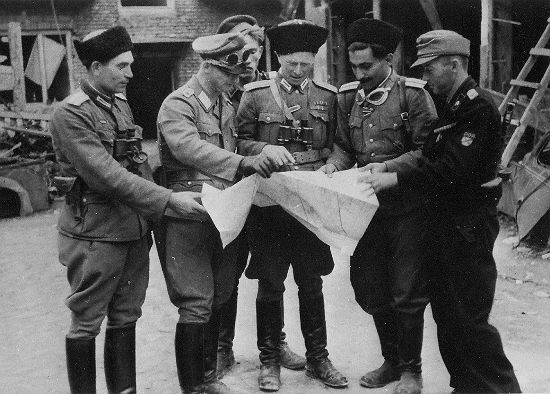
In January 1947, a trial was held in Moscow, during which the Cossack atamans were sentenced to death and executed shortly afterward: Krasnov, Shkuro, Domanov, and several others who were directly or indirectly involved with the Cossacks. The Cossacks were then accused not only of collaborating with the Germans during World War II but also of their actions against the Bolsheviks during the Civil War.
At the service of the new empire
2014, during the Russian invasion of Crimea, the “little green men” were assisted by paramilitary groups calling themselves “Cossacks.” The Don Cossacks also took an active part in the occupation of Donbas in 2014.
During the war in eastern Ukraine in 2014, the unregistered Cossacks, led by their leader ataman Kozitsyn, actively supported pro-Russian forces. According to some sources, there were 3-4 thousand fighters in Ukraine who controlled the Ukrainian cities of Severodonetsk, Lysychansk, Anthracite, Krasnyi Luch, Sverdlovsk, and Alchevsk. However, serious misunderstandings repeatedly arose between them and representatives of the so-called DPR and LPR. Over time, they were no longer needed and returned to Russia.
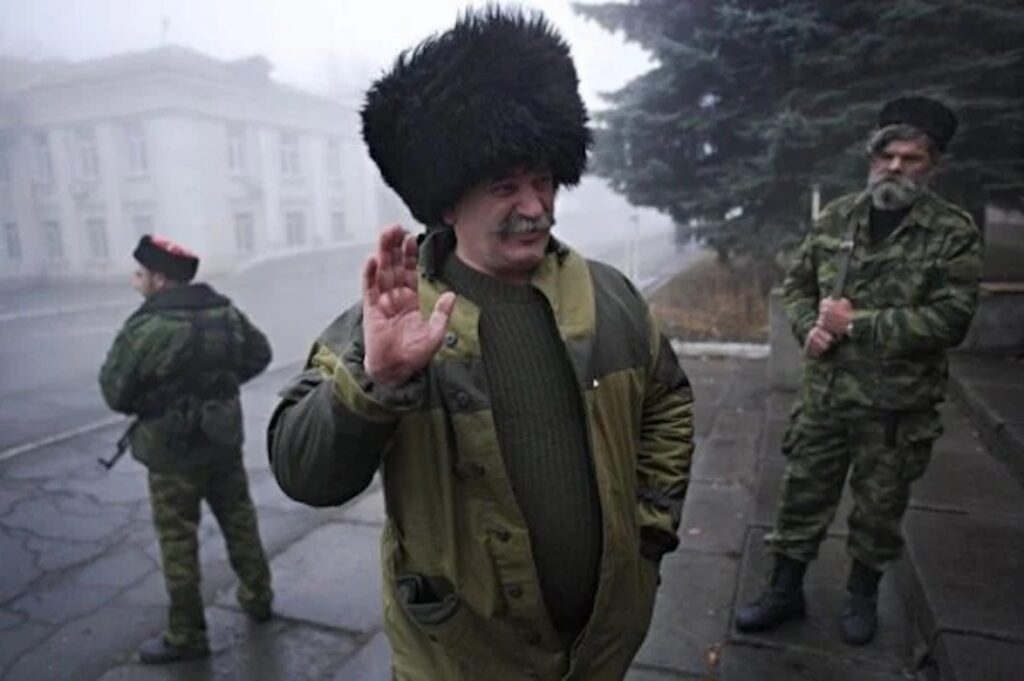
Now we are dealing with the Cossacks of late Putinism. In the early 1990s, the aspirations of the Don Cossacks were quite different. The named above ataman Kozitsyn, who appeared in the Donbas, was one of the most radical Cossack independents at that time. It is known that in the summer of 1994, as the ataman of the Don Army, he signed a treaty of friendship and cooperation with Ichkeria (Independent Chechen Republic). One of the clauses of this agreement stipulated that the Don Army would not allow Russian troops to pass through its territory if they were heading to Chechnya.
Then the Russian state began to gradually crush this Cossack movement. Kozitsyn was removed in 1996. Although his successor also declared that the Cossacks were a separate people. More and more, the Cossacks began to turn into a tool of the Russian state.
For example, as part of Russia’s hybrid war against Ukraine, the Russian Church in Ukraine actively created paramilitary Cossack units in dioceses. More information about this can be found (in Russian) in a series of investigations by a Ukrainian journalist specializing in church studies, Tatiana Derkach.
According to the Russian edition of Politnavigator, the so-called Russian Registered Cossacks number more than 165,000 people, of whom 5,000 have been involved in Russia’s aggression against Ukraine.
Russian paramilitary groups of Cossacks also operate in the West. And this poses a threat.
